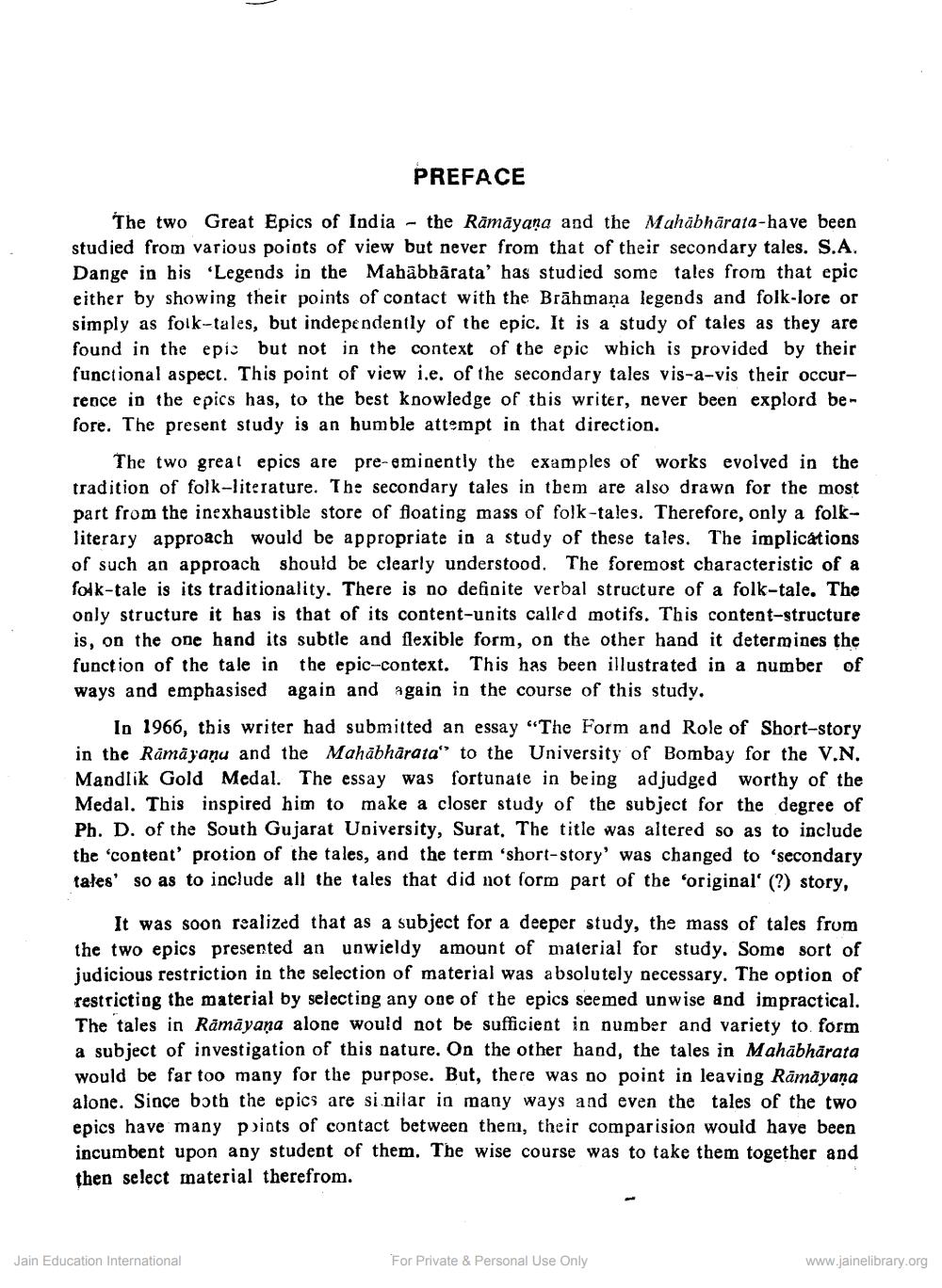Book Title: Secondary Tales of the Two Great Epics Author(s): Rajendra I Nanavati Publisher: L D Indology Ahmedabad View full book textPage 6
________________ PREFACE The two Great Epics of India - the Rāmāyana and the Mahābhārata-have been studied from various poiots of view but never from that of their secondary tales. S.A. Dange in his 'Legends in the Mahābhārata' has studied some tales from that epic either by showing their points of contact with the Brāhmaṇa legends and folk-lore or simply as folk-tales, but independently of the epic. It is a study of tales as they are found in the epic but not in the context of the epic which is provided by their functional aspect. This point of view i.e. of the secondary tales vis-a-vis their occurrence in the epics has, to the best knowledge of this writer, never been explord before. The present study is an humble attempt in that direction. The two great epics are pre-eminently the examples of works evolved in the tradition of folk-literature. The secondary tales in them are also drawn for the most part from the inexhaustible store of floating mass of folk-tales. Therefore, only a folkliterary approach would be appropriate in a study of these tales. The implications of such an approach should be clearly understood. The foremost characteristic of a folk-tale is its traditionality. There is no definite verbal structure of a folk-tale. The only structure it has is that of its content-units called motifs. This content-structure is, on the one hand its subtle and flexible form, on the other hand it determines the function of the tale in the epic-context. This has been illustrated in a number of ways and emphasised again and again in the course of this study. In 1966, this writer had submitted an essay "The Form and Role of Short-story in the Ramāyaṇu and the Mahabharata" to the University of Bombay for the V.N. Mandlik Gold Medal. The essay was fortunate in being adjudged worthy of the Medal. This inspired him to make a closer study of the subject for the degree of Ph. D. of the South Gujarat University, Surat. The title was altered so as to include the 'content' protion of the tales, and the term 'short-story' was changed to 'secondary tales' so as to include all the tales that did not form part of the original' (?) story, It was soon realized that as a subject for a deeper study, the mass of tales from the two epics presented an unwieldy amount of material for study. Some sort of judicious restriction in the selection of material was absolutely necessary. The option of restricting the material by selecting any one of the epics seemed unwise and impractical. The tales in Rāmāyana alone would not be sufficient in number and variety to form a subject of investigation of this nature. On the other hand, the tales in Mahābhārata would be far too many for the purpose. But, there was no point in leaving Ramayana alone. Since both the epics are si nilar in many ways and even the tales of the two epics have many points of contact between them, their comparision would have been incumbent upon any student of them. The wise course was to take them together and then select material therefrom. Jain Education International For Private & Personal Use Only www.jainelibrary.orgPage Navigation
1 ... 4 5 6 7 8 9 10 11 12 13 14 15 16 17 18 19 20 21 22 23 24 25 26 27 28 29 30 31 32 33 34 35 36 37 38 39 40 41 42 43 44 45 46 47 48 49 50 51 52 53 54 55 56 57 58 59 60 61 62 ... 210
